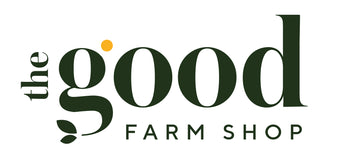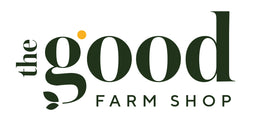Understanding Different Sources of Protein
Hi, I'm Sammy Truswell...
Your Good Farm in-house nutritionist. Here to bring you essential information on nutrition, diet and permaculture gardening - in a bite size, easy to understand, science backed way.

Part 3 of: Why Protein Is Essential for the Human Body
By now, you understand why protein matters (Part 1), and how much you personally need (Part 2). But not all protein is created equal — the source of your protein can make a big difference in terms of nutritional value, digestibility, and long-term health impact.
Let’s dive into the types of protein, the differences between them, and how to choose the right mix for your goals and values.
Complete vs. Incomplete Proteins: Understanding the Difference
Proteins are made up of amino acids, and of the 20 your body uses, nine are “essential” — meaning you must get them from your diet.
A complete protein contains all nine essential amino acids in adequate amounts.
An incomplete protein is missing one or more of those essential amino acids (or has them in low amounts).
Typical Sources:
- Common complete‑protein sources: animal‑based foods such as eggs, meat, fish, dairy. Plant‑based examples include soy, quinoa and buckwheat.
- Common incomplete‑protein sources: most legumes, grains, nuts, seeds and vegetables.
What this means in practice:
- If you eat animal‑based protein regularly, you’re naturally consuming complete proteins.
- If you follow a plant‑based approach, you’ll often rely on incomplete protein sources — which is totally fine if you eat a variety throughout the day and pair complementary foods (for example, legumes + grains) to cover amino acid needs.
Bioavailability: How Well Is It Absorbed?
Not all protein sources are equally digested and absorbed by the body. This is where bioavailability comes in — essentially, how much of the protein you eat is absorbed and used by your body.
- Animal proteins tend to have higher bioavailability, with eggs and whey ranking among the highest closely followed by beef.
- Plant proteins can be less bioavailable due to fibre and antinutrients, but soaking, fermenting, and cooking can improve digestibility and bioavailability.
Tip: If you're plant-based, consider increasing your overall protein intake slightly to compensate for lower bioavailability.
Protein, Sustainability & Nutrition: Why the Source Matters
Not all animal or plant proteins are created equal when it comes to sustainability — or nutrition. While plant-based options are often promoted as the eco-friendly choice, many are grown in large-scale monocultures (like soy, wheat, and corn), which can degrade soil health, rely on heavy pesticide use, and may be genetically modified. Similarly, conventional livestock farming can be resource-intensive and polluting, but regenerative approaches (like rotational grazing or mixed farming systems) can support carbon sequestration, improve soil quality, and enhance biodiversity.
What’s more, the way food is grown or raised also affects its nutrient density — for example, pasture-raised meat and eggs typically contain higher levels of omega-3s and fat-soluble vitamins, while organically or regeneratively grown plants may have richer micronutrient profiles due to healthier soil.
In short: whether it’s from plants or animals, the source, the method, and the soil matter — for both planetary and personal health.
So… What Should You Eat?
There’s no one perfect diet for everyone, but here are some guiding principles to help you choose wisely:
- If you eat everything (omnivore): Select a mix of high‑quality animal and plant proteins. Choose sustainable, ethically‑raised sources (if you can - understandably this can be more expensive)
- Consider “nose‑to‑tail” eating (using more of the animal) to balance nutrient intake and reduce waste.
- If you follow a plant‑based diet: aim to combine different plant proteins throughout the day to cover your amino‑acid needs, and stay mindful of nutrients such as vitamin B12, iron and zinc, which can be more challenging to obtain from plant sources.
- For everyone: Choose whole‑food proteins (minimally processed), aim for variety across meals and foods, and consider the environmental, ethical and health footprint of your protein choices.
Coming Next
Part 4 – What Can We Learn from Traditional Diets & Ancestral Patterns of Protein Consumption?
In the next piece, we’ll explore:
- The protein‑sourcing and dietary patterns of indigenous cultures like the Hadza, Inuit and Aboriginal Australians
- The traditional food wisdom these cultures offer around sustainable and holistic protein choices




















Leave a comment